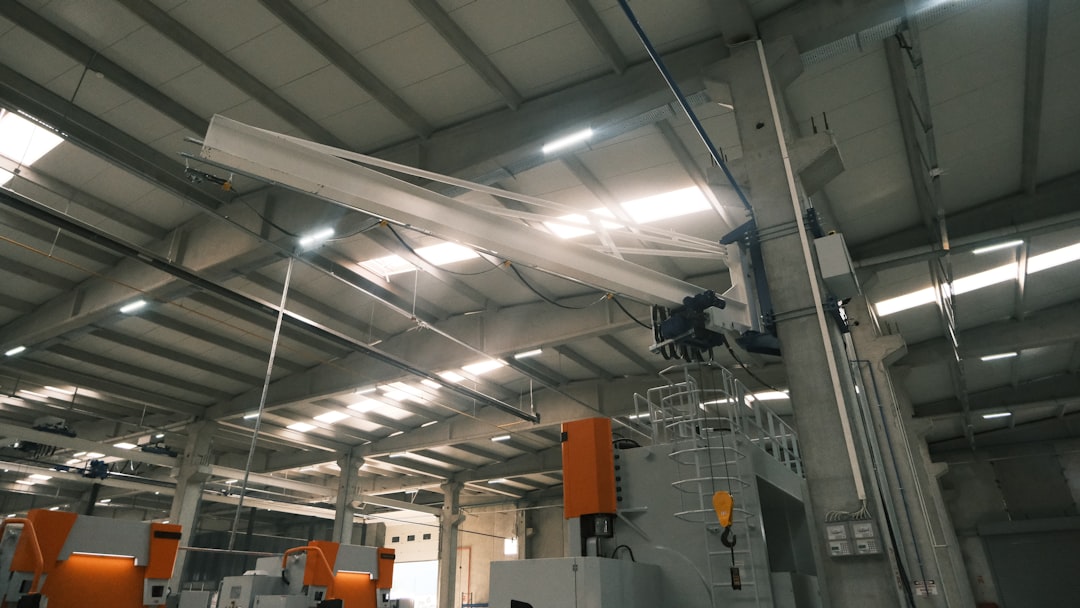body {
font-family: sans-serif;
line-height: 1.6;
margin: 20px;
}
h1, h2, h3 {
color: #333;
}
h1 {
font-size: 2.5em;
}
h2 {
font-size: 2em;
}
h3 {
font-size: 1.5em;
}
img {
max-width: 100%;
height: auto;
display: block;
margin: 20px auto;
}
In the world of industrial design and manufacturing, the choice of structural elements significantly impacts the overall strength, stability, and efficiency of a project. While many focus on visually striking components, the unsung heroes often lie in the robust and reliable structural members – like IPN beams. This comprehensive guide delves into the world of IPN beams, exploring their applications, advantages, design considerations, and more, empowering you to make informed decisions for your next industrial project.
Understanding IPN Beams: A Deep Dive into Their Characteristics
IPN beams, also known as parallel flange I-beams, are a type of structural steel beam characterized by their parallel flanges (the horizontal top and bottom sections) and a web (the vertical connecting section). Unlike other I-beams with tapered flanges, IPN beams maintain a consistent flange width throughout their length. This consistent profile offers several advantages in design and fabrication, as we’ll explore further. Their standardized dimensions and material properties make them readily available and easy to integrate into various industrial projects.
The material used is typically mild steel, but higher-strength steels are also available for applications requiring increased load-bearing capacity. The dimensions of IPN beams are standardized, allowing for easy calculation and selection based on project requirements. These dimensions are usually specified by their height (depth) and weight per unit length.
Key Advantages of Utilizing IPN Beams in Industrial Design
IPN beams offer a compelling combination of strength, efficiency, and ease of use, making them a preferred choice for numerous industrial applications. Here are some key advantages:
- High Strength-to-Weight Ratio: IPN beams efficiently distribute loads, offering high strength with relatively less weight compared to other structural elements, leading to cost savings in material and transportation.
- Simplified Design and Fabrication: The consistent flange width simplifies design calculations and fabrication processes, reducing engineering time and manufacturing costs.
- Ease of Connection: Their parallel flanges make them easier to connect to other structural members using various methods like welding, bolting, or riveting.
- Versatility: IPN beams are adaptable to a wide range of applications, from supporting heavy machinery in factories to forming the skeletal structure of industrial buildings.
- Cost-Effectiveness: The combination of readily available materials, simplified design, and efficient load-bearing capacity contributes to overall cost-effectiveness.
Diverse Applications of IPN Beams Across Industries
The versatility of IPN beams makes them indispensable across various industrial sectors. Some prominent examples include:
- Manufacturing Facilities: Supporting heavy machinery, conveyors, and overhead cranes.
- Warehouses and Distribution Centers: Forming the structural framework for racking systems and supporting heavy loads.
- Construction: Used in industrial buildings, bridges, and other large-scale structures.
- Automotive Industry: Used in manufacturing plants for supporting assembly lines and heavy equipment.
- Offshore Platforms: In specialized high-strength variants, they contribute to the structural integrity of offshore platforms.
Design Considerations for Incorporating IPN Beams
While IPN beams offer numerous advantages, careful consideration of several design aspects is crucial for optimal performance and safety. These include:
- Load Calculations: Accurate load calculations are essential to select the appropriate size and grade of IPN beam to withstand anticipated loads. This involves considering static, dynamic, and live loads.
- Span Length: The span length (distance between supports) significantly impacts the beam’s deflection and stress. Longer spans require larger and stronger beams.
- Support Conditions: The type of support (fixed, pinned, or simply supported) influences the beam’s behavior under load. Appropriate design considerations must be made for each support condition.
- Connection Details: The design of connections (welds, bolts, etc.) is critical for ensuring efficient load transfer and preventing failure. Proper detailing is crucial for structural integrity.
- Corrosion Protection: In environments prone to corrosion, appropriate measures like galvanizing or painting are necessary to protect the beams and extend their lifespan.
Optimizing IPN Beam Selection for Maximum Efficiency
Selecting the right IPN beam involves balancing various factors. Software tools and engineering expertise are invaluable in this process. Factors to consider include:
- Load Capacity: The beam must have sufficient load-bearing capacity to safely handle the anticipated loads.
- Deflection Limits: Excessive deflection can compromise functionality and aesthetics. The selected beam should meet acceptable deflection limits.
- Cost Optimization: Balancing cost with performance is critical. Choosing the most economical beam that meets the design requirements is essential.
- Availability: Ensure the selected beam size and material are readily available from suppliers to avoid delays in the project.
- Fabrication Constraints: Consider any limitations in fabrication processes when selecting the beam size and type.
In conclusion, IPN beams are a crucial component in many industrial designs, offering a robust and efficient solution for a variety of applications. By understanding their characteristics, advantages, and design considerations, engineers and designers can leverage their capabilities to create strong, reliable, and cost-effective industrial structures.
Tags: IPN beams, industrial design, structural steel, I-beams, engineering design




